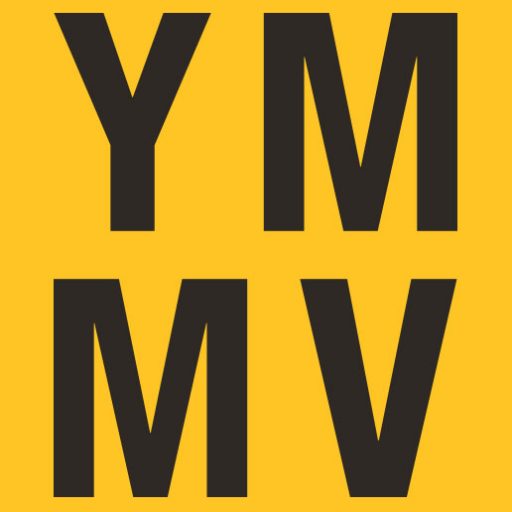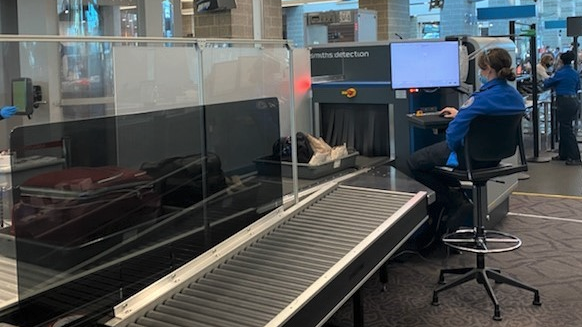Ever since 9/11 and the formation of the Department of Homeland Security (DHS) and the Transportation Security Administration (TSA), we’ve only been allowed to bring a certain amount of liquids with us through the security checkpoint at airports.
Called the 3-1-1 liquids rule, TSA says, “Each passenger may carry liquids, gels and aerosols in travel-size containers that are 3.4 ounces or 100 milliliters. Each passenger is limited to one quart-size bag of liquids, gels and aerosols.”
In the past we’ve written a few posts about this topic:
- How to get around the 3-1-1 liquid rule
- Genius hack to get full sized liquid bottles past security
- TSA’s new rule about liquids in carry-in bags
- First airport announces end of liquid rules for carry-ons
- Another airport marks the end of liquid rules for carry-on bags
Hacks set aside, passengers can bring a few liquids in their carry-on bag that can be more than 3.4 ounces. I’ll be frank – chances are you probably know some of them. But I’m not so sure you know all of them:
Any liquid that is frozen
According to the TSA, frozen liquid items are allowed through as long as they’re frozen solid when you’re at the security checkpoint (because then they’re a solid, not a liquid). However if the gravy, homemade jelly, etc. is partially melted, slushy or has any liquid, they must meet the 3-1-1 liquid requirements. Otherwise you’ll have to eat/drink them immediately, check them, or throw them out.
Liquid hand sanitizer
TSA allows one liquid hand sanitizer container of up to 12 ounces per passenger in carry-on bags until further notice (Thanks, Covid!). These containers will need to be screened separately.
Live fish in water
Live fish in water and a clear transparent container are allowed after inspection by the TSA officer.
Keep in mind that most, but not all airlines allow live fish in their cabin, as per their respective policies (Southwest, for example, only allows cats and dogs, in carriers. Even after they lost some woman’s pet fish). So check with your carrier before bringing your live fish to the airport.
Breast milk, formula & baby/toddler food/drinks
Formula, breast milk, toddler drinks, and baby/toddler food (to include puree pouches) in quantities greater than 3.4 ounces or 100 milliliters are allowed in carry-on baggage and do not need to fit within a quart-sized bag. Formula, breast milk, toddler drinks, and baby/toddler food (to include puree pouches) are considered medically necessary liquids. This also applies to breast milk and formula cooling accessories, such as ice packs, freezer packs, and gel packs (regardless of the presence of breast milk). Your child or infant does not need to be present or traveling with you to bring breast milk, formula and/or related supplies.
Inform the TSA officer at the beginning of the screening process that you are carrying formula, breast milk, toddler drinks, and baby/toddler food (to include puree pouches) in excess of 3.4 ounces. Remove these items from your carry-on bag to be screened separately from your other belongings. TSA officers may need to test the liquids for explosives or concealed prohibited items.
Although not required, to expedite the screening process, it is recommended that formula and breast milk be transported in clear, translucent bottles, not plastic bags or pouches. Liquids in plastic bags or pouches may not be able to be screened by Bottle Liquid Scanners, and you may be asked to open them (if feasible) for alternate screening such as Explosive Trace Detection and Vapor Analysis for the presence of liquid explosives. Screening will never include placing anything into the medically necessary liquid.
TSA X-ray machines do not adversely affect food or medicines. However, if you do not want the formula, breast milk, toddler drinks, and baby/toddler food (including puree pouches) to be X-rayed or opened, please inform the TSA officer. Additional steps will be taken to clear the liquid and you or the traveling guardian will undergo additional screening procedures, including Advanced Imaging Technology screening and additional/enhanced screening of other carry-on property.
Ice packs, freezer packs, frozen gel packs and other accessories required to cool formula, breast milk, toddler drinks, and baby/toddler food (to include puree pouches) – regardless of the presence of breast milk – are also allowed in carry-ons, along with liquid-filled teethers. If these items are partially frozen or slushy, they are subject to the same screening described above.
Gel ice packs
Medically necessary gel ice packs in reasonable quantities are allowed regardless of their physical state of matter (e.g., melted or slushy) with or without the presence of breast milk. Please notify the TSA officer at the checkpoint for inspection.
Liquid or gel-filled teethers
From TSA: Ice packs, freezer packs, frozen gel packs and other accessories required to cool formula, breast milk, toddler drinks, and baby/toddler food (to include puree pouches) – regardless of the presence of breast milk – are also allowed in carry-ons, along with liquid-filled teethers. If these items are partially frozen or slushy, they are subject to the same screening as described above.
Disinfecting wipes
Although the wipes are infused with liquid, passengers can bring jumbo tubs of disinfecting wipes in their carry-on bags, if they’d like. They don’t even have to go in your 3-1-1 bag.
Liquid medication
TSA allows larger amounts of medically necessary liquids, gels, and aerosols in reasonable quantities for your trip.
Inform the TSA officer that you have medically necessary liquids and/or medications and separate them from other belongings before screening begins. Also declare accessories associated with your liquid medication such as freezer packs, IV bags, pumps and syringes. Labeling these items can help facilitate the screening process.
Remove medically necessary items from your carry-on bag. These items will be screened separately from your other belongings. You are not required to place your medically necessary liquid, gel, or aerosol in a plastic zip-top bag. A medically necessary liquid, gel, or aerosol alarm during the screening process may require additional screening and may not be allowed.
The 3-1-1 liquids rule exemption allows certain items to be carried in the cabin of the aircraft when the item is declared and it is:
- Required during your flight and/or at your travel destination;
- Not available at the airport in the sterile area (after the screening checkpoint) and/or;
- Not available at your travel destination.
Common examples of medically necessary liquids, gels, and aerosols include but are not limited to:
- Prescription liquids, creams, and gels;
- Breast milk, infant formula, baby/toddler food (to include puree pouches), and toddler drinks;
- Ice, gel, and freezer packs used to cool breast milk, infant formula, and or other medically necessary items;
- Over-the-counter medical liquids such as saline solution, cough syrup, liquid painkiller, anti-diarrheal, anti-inflammatory and allergy relief medications, etc.
STEB Items
STEB stands for “secure, tamper-evident bags.” They’re most often seen at duty-free shops.
You may carry duty-free liquids in secure, tamper-evident bags, more than 3.4 oz or 100 ml in your carry-on bag if:
- The duty-free liquids were purchased internationally, and you are traveling to the United States with a connecting flight.
- The liquids are packed in a transparent, secure, tamper-evident bag by the retailer and do not show signs of tampering when presented to TSA for screening.
- The original receipt for the liquids is present and the purchase was made within 48 hours.
The items inside the secure, tamper-evident bags must be screened and cleared. Any item that alarms or cannot be screened will not be permitted in your carry-on bag.
Gel-filled bras
The “gel” in these bras are usually silicone inserts. They can be worn through security and onto the plane, even if they’re larger than 3.4 ounces. It’s recommended that you discreetly let the TSA agent know that you’re wearing a gel-filled bra, and they might require you to go through some additional screening. Aside from that, there shouldn’t be a problem.
As more and more airports get the new technology that allows you to have more liquids in your carry-on, the 3-1-1 rule will eventually be a thing of the past (although TSA doesn’t admit that yet). Until then, it’s nice to know the few things that are exempt.
Want to comment on this post? Great! Read this first to help ensure it gets approved.
Want to sponsor a post, write something for Your Mileage May Vary, or put ads on our site? Click here for more info.
Like this post? Please share it! We have plenty more just like it and would love it if you decided to hang around and sign up to get emailed notifications of when we post.
Whether you’ve read our articles before or this is the first time you’re stopping by, we’re really glad you’re here and hope you come back to visit again!
This post first appeared on Your Mileage May Vary
Join our mailing list to receive the latest news and updates from our team.

